PhD scholarship within environmental data science
3 February 2025 4:39pm
UK Home Studentship: Chasing the Cheetah: Pioneering Multi-Modal Sensor Fusion in the Wild
3 February 2025 4:34pm
Award, Fellowship and Grant Opportunities Compiled by ther Society for Conservation Biology.
3 February 2025 4:18pm
rmacrostrat: An R package for accessing and retrieving data from the Macrostrat geological database
Webinar: Wildlife Drones’ Dragonfly – Revolutionizing VHF Tracking Technology
3 February 2025 4:31am
Guidance for a career changer
13 January 2025 10:30pm
1 February 2025 4:42pm
Hey Frank, Thanks for your reply. I really appreciate your insights. It’s cool to see the different paths available in this field. I feel like I’m just starting out and trying to figure out which technologies are key in these industries.
I’m aiming to move from a Data Analyst role to a Data Engineer as that seems to be a standard progression My background is in API and full-stack development with Java/Spring. Right now, I’m diving into Python data libraries and brushing up on my SQL skills.
I’ve put together a simple data pipeline using the Open Weather API (check it out here: https://github.com/MGadhvi/weather-etl) and did some analysis on rhino sighting data from the IUCN (you can find it here: https://github.com/MGadhvi/iucn-rhino-analysis). I’m currently working on a similar project with a larger dataset from the IUCN, using Google Cloud Platform to handle the heavy lifting.
I’m thinking it might be a good idea to find a data role elsewhere to get some experience before jumping into conservation efforts. It might be better to volunteer if possible to learn the ropes
Thanks again for your help. Much appreciated
Best, Manish Gadhvi
1 February 2025 4:46pm
Hi Alex,
Thank you for your reply. I've used Kaggle before but I've never heard of the others.
I'm hoping to start volunteering at my local zoo soon as well so I'll see if there is anything I can do there
All the best,
Manish
Undergrad team available to tackle conservation problem statements
21 January 2025 6:37pm
31 January 2025 9:38pm
Hi Colleen,
Thank you for sharing this exciting opportunity. I am Lucie, International Development Manager of Natural Solutions. We are a company at the intersection of biodiversity and tech for over 15 years. We specialize in developing digital tools for conservation organizations, researchers, and policymakers, helping them collect, analyze, and visualize biodiversity data. More recently, we’ve been exploring new possibilities and began to analyze what we could propose to businesses to support them in understanding their dependencies and impacts on nature (impact assessment platforms that help companies quantify their environmental footprint, define relevant indicators, and develop actionable biodiversity strategies etc)
We would be interested in exploring whether this topic could be relevant for your students.
Would this align with your students' interests and skill sets? Additionally, could you share more details on the timeline and any constraints—when would the project start, and what are the expected deliverables?
Looking forward to discussing this further! My email is lucie_gallegos@natural-solutions.eu
Don't hesitate to reach out!
Best,
Lucie
Rewilding Affric Highlands – GIS and Data Officer
31 January 2025 9:38am
Deliver stronger VM0047-aligned Nature-Based Solutions
31 January 2025 9:30am
Automatic acoustic annotation (Deep Voice) - Looking for new projects and collaboration.
31 January 2025 4:28am
The New Way We Listen to Nature: A Tech Revolution in Conservation and Restoration
30 January 2025 7:44pm
The transmission range of animal tracking tags.
16 December 2024 1:13pm
10 January 2025 1:41pm
There was research on this in the very early days of VHF radio tracking. I presume what you are interested in is the period between audible bleeps vs the easeof detecting a mximum as an antenna is rotated to get a directional fix. If memory serves the optimum between battery life and ease of use was either an interval of 0.8s or a frequency of 0.8 Hz (so an interval of 1.2 s). The low end of your adjustment range would be midway between those two - the res tof the range would be very hard to use.
10 January 2025 4:06pm
Hi Chittakon,
I think an 'ideal' optimization between transmission interval and battery life would depend on the application. As I think Peter has indicated, longer transmission intervals could make it very difficult to determine direction, particularly on a moving animal. If you were not trying to find direction and/or locate the transmitter - maybe just detecting presence or absence - then a longer interval could work. cheers
29 January 2025 10:43pm
Choice of pulse interval on VHF transmitters really comes down to how mobile your study animal is and how complex the tracking environment is.
I have used pulse intervals down to 2 seconds on animals that spend a lot of time sitting still. This does save on power but if you are used to a faster pulse interval, it can be a real lesson in patience when you are trying to get an accurate bearing on the transmitter. For animals that are constantly on the move, don't even think about going slower than 1 second, particularly if the transmitter is likely to be intermittently blocked by habitat features.
Other ways of saving power can be to have periods when the transmitter is scheduled to sleep (when you are unlikely to be tracking) or to have bursts of pulses (say 1 minute on, one minute off).
Another important feature to consider is ensuring that the transmission has a stable pulse strength and frequency. There is nothing as frustrating as a transmitter that fluctuates in signal strength.
The Minor Foundation for Major Challenges calls for "new and unexpected ways of communicating the need for transitioning to a low-carbon economy"
29 January 2025 9:23pm
National Conservation Trust Fund of Jamaica call for proposals (JM$500K-5M)
29 January 2025 9:07pm
CEPF 9th call for LOIs for large grants (>$50K) Aplicar en inglés o español
29 January 2025 8:51pm
Catch Up on the WILDLABS Software Development Community Call: Quality Assurance and Testing
29 January 2025 4:59pm
12 February 2025 5:48pm
Collaring elephants and post-release monitoring
29 January 2025 8:18am
Software Developer - Key Conservation
28 January 2025 11:36pm
1st International Conference on Drones and Unmanned Systems (DAUS' 2025)
28 January 2025 5:29pm
7 February 2025 6:51pm
What Are Innovative Technologies, and Why Should Conservationists Care?
28 January 2025 3:38pm
INSTANT DETECT 2.0 - ALPHA TESTING
28 January 2025 3:18pm
Collaring Elephants and Post Release Monitoring
28 January 2025 3:16pm
Help Shape the Future of the WILDLABS Geospatial Group!
7 December 2024 2:43pm
7 January 2025 5:49pm
Happy New Year Geospatial community! Don't forget to fill in the survey. Closing date is 19th January.
We'd love to hear from you!
27 January 2025 8:24pm
We're extending the survey deadline! Please don't forget to let us know if you would like to speak about your work at one of the future Geospatial community events.
Many thanks!


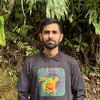



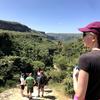




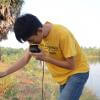

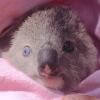



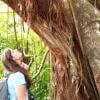
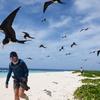


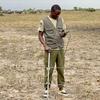


29 January 2025 6:57pm
Hi Manish,
There are other related posts here on WILDLABS with some potentially interesting answers, e. g. this post. Perhaps you might find some useful information there in case you haven't seen it already. Volunteering in that area might also be an interesting entry point.
Cheers,
Alex